Uncovering the Secrets of the German Shepherd:
Hello, dog lovers today I will explain in detail about the German shepherd dog breed.
In this blog, we aim to provide valuable information about German Shepherds in straightforward and easy-to-understand language. Whether you’re a first-time owner or considering adding a German Shepherd to your family, our goal is to offer practical insights, tips, and advice to help you make informed decisions and provide the best possible care for your furry friend.
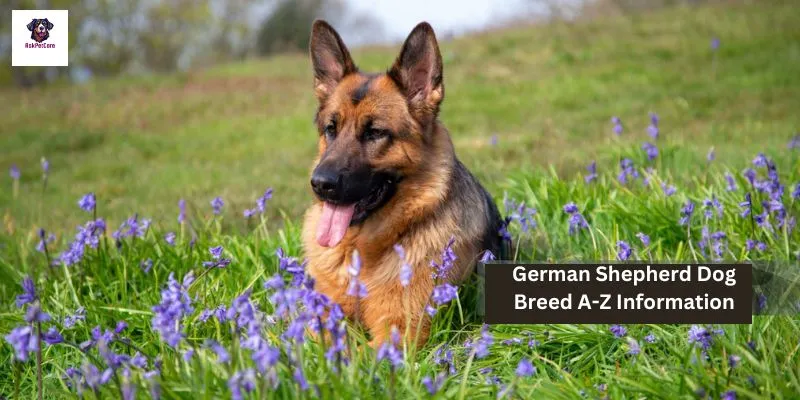
- Brief overview of German Shepherds: German Shepherds are a popular breed of dog known for their intelligence, loyalty, and versatility. They originated in Germany and were initially bred for herding sheep. Today, they serve as excellent working dogs in various roles, including police work, search and rescue, and service dogs. They are also beloved family pets due to their protective nature and affectionate demeanor.
- Importance of understanding the breed for potential owners: Potential owners need to understand the characteristics and needs of German Shepherds before bringing one into their home. German Shepherds have specific traits and requirements that may not suit every lifestyle. Understanding their temperament, exercise needs, grooming requirements, and potential health issues can help ensure a successful and fulfilling relationship between the owner and the dog.
History and Origin of the German Shepherd breed:
- Origins of the German Shepherd breed: German Shepherds originated in Germany in the late 19th century. They were developed by a German cavalry officer named Captain Max von Stephanitz, who aimed to create a versatile working dog with intelligence, strength, and agility. The breed’s ancestry can be traced back to local herding dogs, particularly those used by German farmers for centuries. Captain von Stephanitz founded the German Shepherd Dog Club in 1899 and standardized the breed’s characteristics, leading to the establishment of the German Shepherd as a distinct breed.
- Historical uses and roles of German Shepherds: German Shepherds were initially bred for herding and guarding sheep, but their exceptional abilities soon led to their adoption in various working roles. During World War I and World War II, German Shepherds served as messenger dogs, sentries, and search and rescue dogs for the military. They also became popular as police and service dogs due to their intelligence, loyalty, and trainability. Today, German Shepherds continue to excel in a wide range of roles, including police work, protection, search and rescue, therapy, and assistance for individuals with disabilities.
- Evolution of the breed’s characteristics over time: Over the years, the characteristics of German Shepherds have evolved to suit their changing roles and environments. Initially bred for their herding abilities, modern German Shepherds exhibit traits such as intelligence, agility, courage, and loyalty. Their physical appearance has also undergone some changes, with variations in coat color, ear shape, and body structure depending on breeding standards and preferences. Despite these changes, the core qualities of the German Shepherd breed, including their versatility and working ability, have remained consistent throughout their history.
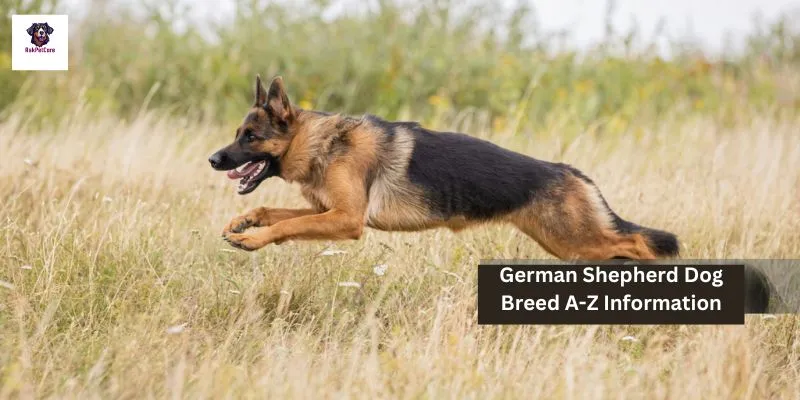
Physical Characteristics German Shepherd breed:
- Description of German Shepherds’ appearance: German Shepherds are medium to large-sized dogs with a strong and muscular build. They have a well-proportioned body with a deep chest and straight back. Their head is noble and well-defined, with a slightly domed forehead and a long, strong muzzle. German Shepherds have dark, almond-shaped eyes that express intelligence and attentiveness. They have a medium-length, dense double coat that lies close to their body, providing insulation and protection from the elements.
- Common coat colors and patterns: German Shepherds come in various coat colors, but the most common ones are black and tan, black and red, sable, and solid black. Their coats may also have markings or patterns such as saddleback or blanket patterns, where the back is darker than the rest of the body. Sable German Shepherds have a coats with shades of brown, tan, and black that give them a distinctive and beautiful appearance. While black and tan is the most recognizable color combinations, German Shepherds can also come in solid black, solid white, or even blue or liver.
- Notable features such as ears, tail, and body structure: German Shepherds have distinctive features such as erect, triangular-shaped ears that stand up when they are alert or attentive. Their ears are set high on the head and contribute to their intelligent and alert expression. German Shepherds also have a long, bushy tail that reaches to their hocks. When relaxed, their tail hangs down, but when excited or engaged, it may be raised in a slight curve. Additionally, their body structure is well-balanced, with strong legs and feet that enable them to move with agility and grace. Their overall appearance exudes strength, confidence, and athleticism.
| Characteristic | Description |
| Size | Medium to large |
| Height | Typically 20-24 inches at the shoulder |
| Coat | Dense and double-layered |
| Color | Can vary widely, including combinations of white, black, gray, tan, and brindle |
| Build | Muscular and sturdy |
| Ears | Can be erect like a Husky or fold over like a Staffy |
| Tail | Often medium-length and may be curled or straight |
| Energy Level | High |
| Temperament | Energetic, playful, affectionate, and loyal |
| Exercise Needs | Requires regular exercise and mental stimulation |
| Socialization Needs | Benefits from early and consistent socialization to prevent behavioral issues |
These figures provide a visual representation of the general size and height of a Husky/Staffy mix.
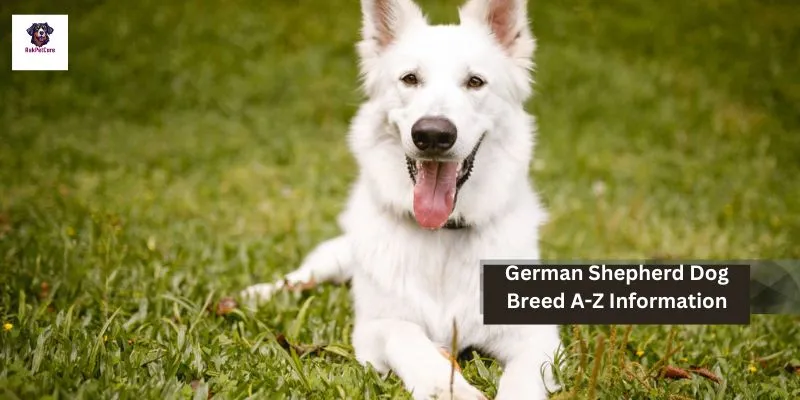
Temperament and Behavior of German Shepherd breed:
- Overview of German Shepherds’ temperament: German Shepherds are known for their loyal, confident, and courageous temperament. They are intelligent, versatile, and adaptable dogs that excel in various roles, including family pets, working dogs, and companions for individuals with disabilities. German Shepherds are protective of their families and territories, making them excellent guard dogs and watchdogs. Despite their protective nature, they are also affectionate and loving towards their owners, forming strong bonds and connections.
- Loyalty, intelligence, and trainability: German Shepherds are highly loyal and devoted to their owners, often forming deep and lasting bonds with them. They are intelligent dogs with keen problem-solving abilities and a strong desire to please their owners. These traits make them highly trainable and responsive to commands. With proper training and positive reinforcement techniques, German Shepherds can learn a wide range of commands and tasks, making them suitable for various roles such as obedience competitions, search and rescue, and service work.
- Social behavior with family, children, and other pets: German Shepherds are generally friendly and affectionate with their families, including children. They are known for their gentle and patient demeanor around children, making them excellent family pets. However, proper socialization is essential to ensure they interact well with children and other pets in the household. Early exposure to different people, animals, and environments helps German Shepherds develop good social skills and manners, reducing the likelihood of aggression or fearfulness.
- Common behavioral traits and tendencies: German Shepherds have some common behavioral traits and tendencies that are characteristic of the breed. They are energetic and require plenty of physical and mental stimulation to prevent boredom and destructive behaviors. German Shepherds may exhibit herding instincts, such as nipping or chasing, especially towards children or other pets. They are also protective by nature and may bark or act defensively if they perceive a threat to their family or territory. Proper training, socialization, and consistent leadership are important for managing and channeling these behaviors appropriately.

Care and Maintenance of German Shepherd breed:
- Exercise needs and physical activity requirements: German Shepherds are active and energetic dogs that require regular exercise to stay healthy and happy. They thrive on physical activity and mental stimulation, so it’s essential to provide them with daily opportunities for exercise and play. Aim for at least 1-2 hours of exercise per day, which can include activities such as walks, runs, hikes, fetch, or interactive games. Engaging in activities that stimulate their instincts, such as agility training or obedience classes, can also help keep them mentally sharp and fulfilled.
- Dietary considerations and nutritional needs: German Shepherds have specific dietary needs to support their active lifestyle and overall health. Choose a high-quality dog food that is formulated for large breeds and provides balanced nutrition. Look for a food that lists meat as the first ingredient and avoids fillers or artificial additives. Feeding your German Shepherd two or three meals a day, rather than free-feeding, can help prevent obesity and digestive issues. Additionally, provide fresh water at all times and monitor their weight to ensure they maintain a healthy body condition.
- Grooming tips for maintaining their coat and overall health: German Shepherds have a double coat that sheds moderately year-round and heavily during seasonal changes. Regular grooming is important to keep their coat healthy and reduce shedding. Brush your German Shepherd’s coat at least a few times a week with a slicker brush or de-shedding tool to remove loose hair and prevent matting. Bathe them as needed using a gentle dog shampoo, and trim their nails regularly to prevent overgrowth and discomfort. Pay attention to their ears and teeth, cleaning them regularly to prevent infections and dental issues.
- Health concerns and preventive measures for common ailments: German Shepherds are prone to certain health issues, including hip dysplasia, elbow dysplasia, degenerative myelopathy, and bloat (gastric dilatation-volvulus). Regular veterinary check-ups are important to monitor their health and catch any potential issues early. Maintain a healthy weight for your German Shepherd to reduce the risk of joint problems, and provide them with regular exercise to keep their muscles strong and their joints mobile. Consider feeding them a balanced diet supplemented with joint-supporting nutrients such as glucosamine and chondroitin. Be mindful of their activity levels and avoid vigorous exercise immediately before or after meals to reduce the risk of bloat. By staying proactive with preventive measures and addressing any health concerns promptly, you can help ensure a long and healthy life for your German Shepherd.
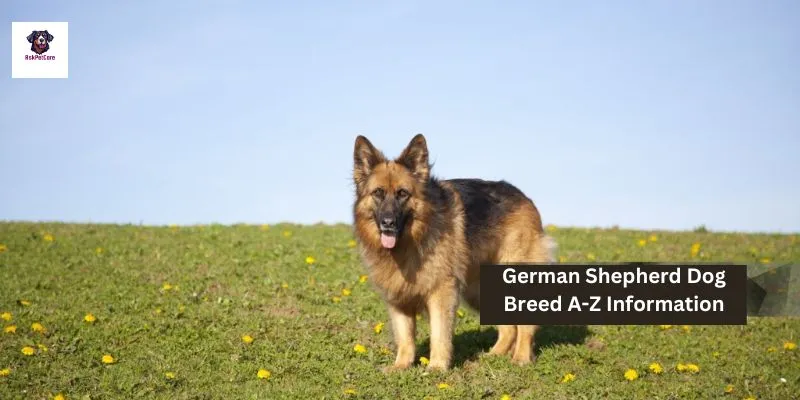
Training and Obedience of German Shepherd breed:
- Importance of early training and socialization: Early training and socialization are crucial for German Shepherds to develop into well-behaved and well-adjusted dogs. Start training your German Shepherd as soon as you bring them home, typically around 8-12 weeks of age. Socialization involves exposing your puppy to different people, animals, environments, and experiences in a positive and controlled manner. This helps them learn how to interact appropriately with others and build confidence in various situations. Early training lays the foundation for good behavior and prevents future problems by teaching your German Shepherd how to respond to commands and handle different situations.
- Effective training techniques for German Shepherds: German Shepherds respond well to positive reinforcement training techniques, which involve rewarding desired behaviors with treats, praise, or toys. Use rewards to motivate and encourage your German Shepherd to follow commands and engage in desired behaviors. Be patient, consistent, and firm in your training approach, providing clear and consistent cues and expectations. Use short training sessions of 10-15 minutes each, several times a day, to keep your German Shepherd focused and engaged. Avoid punishment-based training methods, as these can damage your bond with your dog and lead to fear or aggression.
- Addressing behavioral challenges and problem-solving: German Shepherds may exhibit certain behavioral challenges, such as barking, chewing, digging, or jumping. Address these issues through positive reinforcement training, redirection, and management techniques. Identify the underlying cause of the behavior and address it appropriately. For example, if your German Shepherd is barking excessively, determine if they are alerting you to something or if they are bored or anxious. Provide mental and physical stimulation, teach them an alternative behavior, and reward calm and quiet behavior. Consistency and patience are key to addressing behavioral challenges effectively.
- Training tips for specific commands and obedience training: German Shepherds are intelligent and trainable dogs that excel in obedience training. Start with basic commands such as sit, stay, come, and down, and gradually progress to more advanced commands and tasks. Use positive reinforcement techniques to teach commands, rewarding your German Shepherd for obeying cues and demonstrating desired behaviors. Break down training tasks into small steps and practice them in different environments and situations to generalize the behavior. Be consistent with your cues and expectations, and practice regularly to reinforce training and maintain obedience. Enroll in obedience classes or work with a professional trainer if needed to address specific training goals or challenges.

Living with a German Shepherd:
- Creating a suitable living environment for a German Shepherd: German Shepherds thrive in homes with ample space to move around and explore. Ensure your living environment is safe and secure, with a fenced yard or outdoor area for exercise and play. Provide a comfortable indoor space with a cozy bed or crate where your German Shepherd can rest and relax. Remove any hazards or toxic substances from your home, and consider puppy-proofing or securing areas where your dog may have access to potentially harmful items. Additionally, provide access to clean water and food bowls, and consider setting up designated areas for feeding and grooming.
- Integration into family life and routines: German Shepherds are social dogs that thrive on companionship and interaction with their families. Include your German Shepherd in family activities and routines, such as walks, outings, and meals. Establish consistent rules and boundaries to help your dog understand their role within the family hierarchy. Assign specific tasks and responsibilities to family members for caring for and interacting with your German Shepherd, such as feeding, grooming, and training. Encourage positive interactions and bonding experiences between your dog and family members to strengthen the bond and trust between them.
- Tips for providing mental stimulation and enrichment: German Shepherds are intelligent and active dogs that require mental stimulation to prevent boredom and behavioral problems. Provide a variety of interactive toys, puzzles, and games to keep your German Shepherd engaged and entertained. Rotate toys regularly to keep them interesting and challenging. Engage in activities such as obedience training, agility courses, or nose work to provide mental and physical exercise. Incorporate scent games, hide-and-seek, and fetch into your daily routine to stimulate your German Shepherd’s instincts and keep their mind sharp. Consider enrolling in training classes or joining dog sports clubs to provide additional mental and social stimulation.
- Understanding the responsibilities and commitments of ownership: Owning a German Shepherd is a significant responsibility that requires time, effort, and commitment. Understand the financial costs associated with dog ownership, including food, veterinary care, grooming, and supplies. Allocate time each day for exercise, training, and bonding activities with your German Shepherd. Be prepared to provide lifelong care and support for your dog, including meeting their physical, emotional, and social needs. Consider the long-term implications of owning a German Shepherd, including potential lifestyle changes, travel restrictions, and accommodation requirements. Make informed decisions about breed-specific traits and behaviors, and seek guidance from experienced owners or professionals if needed. By understanding and embracing the responsibilities of ownership, you can provide a fulfilling and enriching life for your German Shepherd.
Frequently Asked Questions (FAQs) of German shepherd breed:
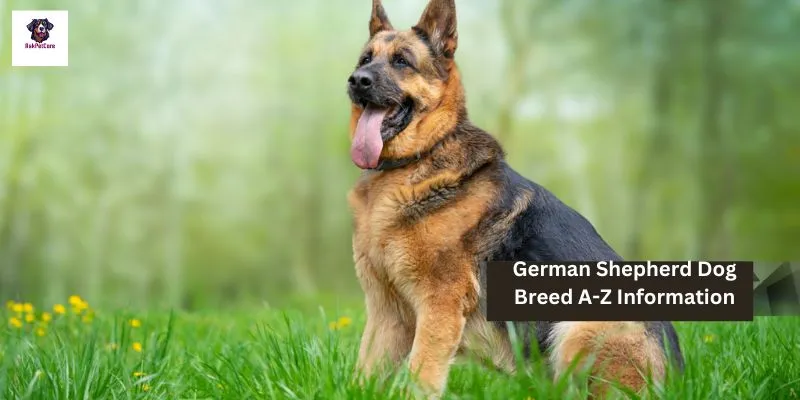
- What are the typical personality traits of German Shepherds?
- German Shepherds are known for their intelligence, loyalty, and versatility. They are confident, courageous, and protective of their families. They are also highly trainable and excel in various roles, including working dogs, service animals, and family pets.
- How much exercise do German Shepherds need?
- German Shepherds are active and energetic dogs that require regular exercise to stay healthy and happy. They benefit from at least 1-2 hours of physical activity per day, which can include walks, runs, hikes, or playtime in a fenced yard. Engaging in activities that stimulate their mind and body helps prevent boredom and behavioral issues.
- What is the best way to train a German Shepherd?
- Positive reinforcement training is generally considered the best approach for training German Shepherds. This involves rewarding desired behaviors with treats, praise, or toys to reinforce good behavior. Consistency, patience, and clear communication are key to successful training. Using forceful or punitive methods can damage the bond between you and your dog and lead to fear or aggression.
- How do I socialize my German Shepherd with other dogs and people?
- Early and ongoing socialization is essential for German Shepherds to learn how to interact appropriately with other dogs and people. Expose your German Shepherd to different environments, experiences, and social situations in a positive and controlled manner. Encourage calm and confident behavior, and reward your dog for friendly and relaxed interactions.
- What are some common health issues that affect German Shepherds, and how can they be prevented or managed?
- German Shepherds are prone to certain health issues, including hip dysplasia, elbow dysplasia, degenerative myelopathy, and bloat (gastric dilatation-volvulus). Regular veterinary check-ups, maintaining a healthy weight, and providing proper nutrition and exercise can help prevent or manage these conditions. Additionally, be aware of signs of discomfort or illness in your German Shepherd and seek prompt veterinary care if needed.
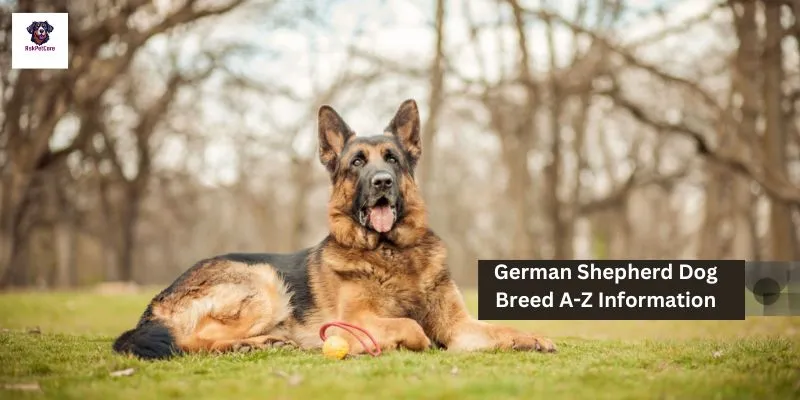
Providing practical advice and solutions for common concerns:
Here are five practical advice and solutions for common concerns about German Shepherds:
- How can I prevent my German Shepherd from excessive shedding?
- Regular grooming is key to managing shedding in German Shepherds. Brush your dog’s coat several times a week to remove loose hair and reduce shedding. Use a de-shedding tool or slicker brush to reach the undercoat and remove dead hair. Additionally, ensure your German Shepherd is on a balanced diet with proper nutrition to support healthy skin and coat.
- What is the best diet for a German Shepherd, and how often should they be fed?
- German Shepherds benefit from a high-quality diet that is rich in protein and balanced in nutrients. Choose a dog food formulated for large breeds, with real meat as the first ingredient and minimal fillers or artificial additives. Feed your German Shepherd two or three meals a day, rather than free-feeding, to prevent obesity and encourage regular digestion.
- How do I handle my German Shepherd’s barking or digging behaviors?
- Barking and digging are natural behaviors for dogs, but excessive or inappropriate behavior can be managed with training and redirection. Teach your German Shepherd a “quiet” command to control barking and reward calm behavior. Provide appropriate outlets for digging, such as a designated digging area or sandbox, and discourage digging in unwanted areas with positive reinforcement and supervision.
- What are some effective ways to manage separation anxiety in German Shepherds?
- German Shepherds are prone to separation anxiety, but there are several strategies to help manage this behavior. Gradually acclimate your dog to being alone by leaving them alone for short periods and gradually increasing the time. Provide plenty of mental and physical exercise to tire them out before leaving, and offer interactive toys or puzzle feeders to keep them entertained. Consider using calming aids or supplements, such as pheromone diffusers or anxiety vests, to help ease their anxiety.
- How can I keep my German Shepherd mentally stimulated and engaged?
- German Shepherds are intelligent dogs that require mental stimulation to prevent boredom and behavioral issues. Provide a variety of interactive toys, puzzles, and games to keep your dog mentally engaged. Incorporate obedience training, agility courses, or nose work into your daily routine to challenge their mind and keep them focused. Rotate toys regularly to keep them interesting, and engage in activities that tap into their instincts, such as scent games or fetch.
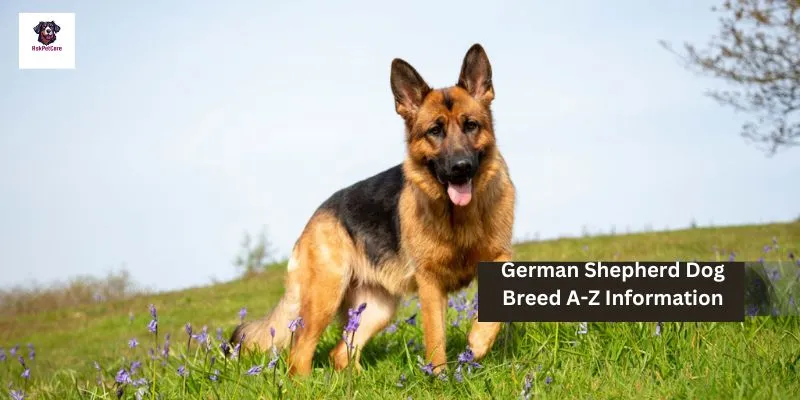
Dispelling myths and misconceptions about the breed:
Here are five myths and misconceptions about German Shepherds, along with explanations to dispel them:
- Myth: German Shepherds are aggressive dogs.
- Fact: German Shepherds are not inherently aggressive. They are known for their loyalty and protective instincts, which can be mistaken for aggression if not properly managed. With proper training, socialization, and responsible ownership, German Shepherds can be friendly, well-behaved companions.
- Myth: German Shepherds are not suitable for families with children.
- Fact: German Shepherds can be excellent family pets when raised and trained properly. They are often gentle and patient with children, forming strong bonds and becoming loyal protectors of their families. Supervision and teaching children how to interact respectfully with dogs are important for a harmonious relationship.
- Myth: German Shepherds require a large amount of space and are not suitable for apartment living.
- Fact: While German Shepherds benefit from space to move around and exercise, they can adapt well to apartment living with proper care and exercise. Regular walks, outdoor activities, and mental stimulation can help meet their physical and mental needs, even in smaller living spaces.
- Myth: German Shepherds are prone to aggression towards other dogs and animals.
- Fact: While German Shepherds can be territorial and protective, aggression towards other dogs and animals is not inherent to the breed. Proper socialization from a young age, positive interactions with other dogs, and consistent training can help prevent aggressive behavior toward other animals.
- Myth: German Shepherds are difficult to train and handle.
- Fact: German Shepherds are highly intelligent and trainable dogs that excel in obedience training and various activities. With positive reinforcement techniques, consistency, and patience, German Shepherds can learn quickly and respond well to commands. Proper leadership, socialization, and ongoing training are key to managing their behavior effectively.
Testimonials from German Shepherd owners :
- Testimonials from German Shepherd owners:
- “Our German Shepherd, Max, has been an incredible addition to our family. His loyalty and protective nature have made us feel safe and secure. He’s also incredibly intelligent and has picked up on commands with ease. We couldn’t imagine life without him!”
- “Having grown up with German Shepherds, I knew I wanted one for my own family. Our Shepherd, Luna, has exceeded our expectations. She’s not only a loving companion but also a natural protector. Her gentle demeanor with our children melts our hearts every day.”
- “I adopted a German Shepherd mix from a rescue shelter, and it’s been one of the best decisions I’ve ever made. Despite his difficult past, he’s shown incredible resilience and love. He’s become my constant companion, bringing joy and laughter into my life.”
- “Our German Shepherd, Rex, has been a lifesaver for my son who struggles with anxiety. Rex’s calming presence and unwavering loyalty have provided comfort and support during difficult times. He’s more than just a pet; he’s a cherished member of our family.”
- “As an active individual, I needed a dog that could keep up with my lifestyle. My German Shepherd, Bailey, has been the perfect adventure buddy. Whether we’re hiking in the mountains or going for a run, she’s always by my side, eager and ready for the next adventure.”
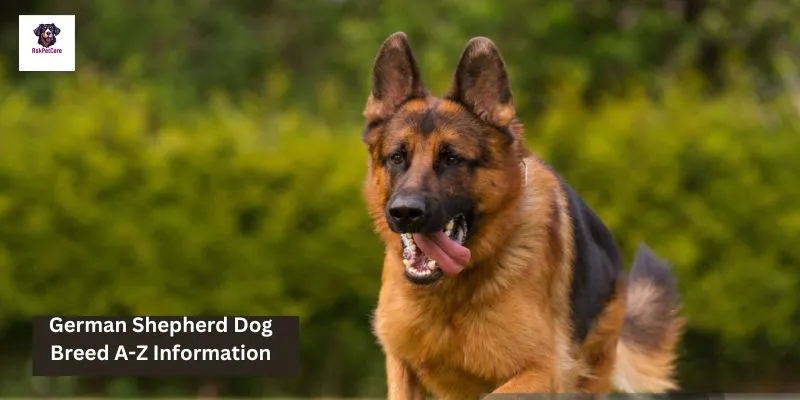
B. Challenges faced and how they were overcome:
- “When we first brought our German Shepherd home, we struggled with his leash-pulling behavior during walks. Through consistent training and positive reinforcement techniques, we were able to teach him loose leash walking, making our walks more enjoyable for both of us.”
- “Our German Shepherd had separation anxiety when left alone, leading to destructive behaviors. With the help of a professional trainer and gradual desensitization exercises, we were able to reduce his anxiety and teach him to feel more comfortable being alone.”
- “As a high-energy breed, our German Shepherd required a lot of mental stimulation to prevent boredom and destructive behaviors. We introduced puzzle toys, interactive games, and obedience training sessions to keep him mentally engaged and fulfilled.”
- “Our German Shepherd struggled with reactivity towards other dogs, making walks challenging. With the guidance of a certified behaviorist and counter-conditioning techniques, we were able to manage his reactions and improve his socialization skills over time.”
- “During the puppy stage, our German Shepherd exhibited mouthiness and nipping behaviors. Through consistent redirection and teaching bite inhibition, we were able to curb these behaviors and foster a gentle mouth and bite.”
C. Insights into daily life with a German Shepherd Dog Breed as a companion:
- “One of the joys of having a German Shepherd is their unwavering loyalty and companionship. Whether it’s snuggling on the couch or going for a hike, they’re always by your side, ready to share in life’s adventures.”
- “German Shepherds thrive on routine and structure, so incorporating daily walks, training sessions, and playtime into our routine has helped keep our Shepherd happy and fulfilled.”
- “Owning a German Shepherd means embracing an active lifestyle. From morning jogs to afternoon play sessions in the backyard, our Shepherd keeps us on our toes and encourages us to stay active and healthy.”
- “German Shepherds are highly intelligent and thrive on mental stimulation. We’ve found that incorporating puzzle toys, obedience training, and nose work activities into our daily routine helps keep our Shepherd’s mind sharp and engaged.”
- “Having a German Shepherd means being prepared for a lifetime of love and loyalty. Their unwavering devotion and companionship make every day brighter, and we’re grateful to have them as part of our family.”
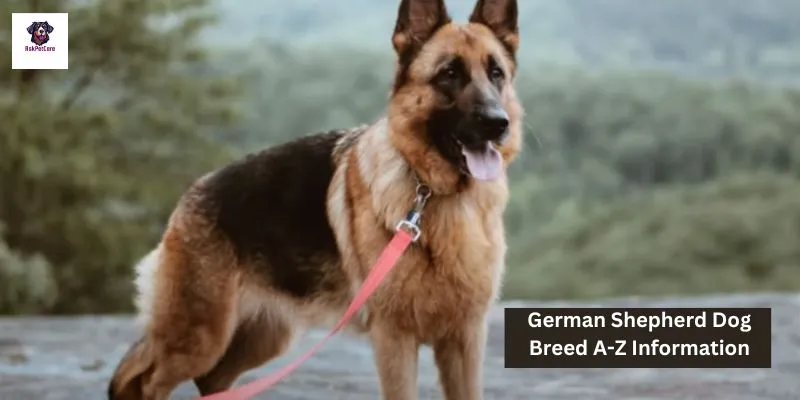
German shepherd mix.
- What is a German Shepherd Mix? German Shepherd mixes, often referred to as “Shepherd mixes” or “GSD mixes,” are dogs that have German Shepherd ancestry mixed with one or more other breeds. These mixes inherit traits from both parent breeds, resulting in a wide variety of appearances, temperaments, and characteristics.
- Common German Shepherd Mixes. There are numerous German Shepherd mixes, each with its unique traits. Some popular German Shepherd mixes include:
German Shepherd Lab Mix (Sheprador)
German Shepherd Husky Mix (Shepsky)
German Shepherd Golden Retriever Mix (Golden Shepherd)
German Shepherd Border Collie Mix (Shollie)
German Shepherd Rottweiler Mix (Shepweiler)
III. Appearance of German Shepherd Mixes. German Shepherd mixes can vary widely in appearance depending on the other breed(s) they are mixed with. However, they often exhibit a combination of traits from both parent breeds. They may have the German Shepherd’s distinctive pointed ears, strong build, and intelligent expression, along with features inherited from the other breed(s).
- Temperament of German Shepherd Mixes. The temperament of a German Shepherd mix can be influenced by both the German Shepherd and the other breed(s) in the mix. However, they often share traits such as intelligence, loyalty, and protectiveness. German Shepherd mixes are typically devoted companions and may excel in various roles, including as family pets, working dogs, or service animals.
- Care and Training of German Shepherd Mixes. German Shepherd mixes require similar care and training as purebred German Shepherds. They benefit from regular exercise, mental stimulation, and positive reinforcement training techniques. Providing a balanced diet, regular veterinary care, and grooming are also important for their health and well-being.
- Considerations Before Getting a German Shepherd Mix. Before bringing home a German Shepherd mix, it’s essential to research both the German Shepherd breed and the other breed(s) in the mix. Consider factors such as size, energy level, grooming requirements, and potential health issues. Additionally, meet with reputable breeders or adoption organizations to learn more about the specific mix you’re interested in and ensure it’s the right fit for your lifestyle and needs.
VII. Conclusion German Shepherd mixes. are wonderful companions that combine the traits of the German Shepherd with those of other breeds. Whether you’re drawn to their intelligence, loyalty, or versatility, German Shepherd mixes can make excellent family pets, working dogs, or service animals with the right care, training, and love.

Alsheshan dog vs. German shepherd.
- Alaskan Malamute: Alaskan Malamutes are a large and powerful breed originally bred for hauling heavy freight as sled dogs in the Arctic. They are known for their strength, endurance, and independence. Here’s a breakdown:
- Origins and History: Alaskan Malamutes originated from the native Inuit people of Alaska and were developed to pull heavy sleds over long distances in harsh Arctic conditions. They have a long history as working dogs and were prized for their strength, stamina, and ability to withstand extreme cold.
- Appearance: Alaskan Malamutes are large, strong dogs with a sturdy build and a dense double coat that protects against cold weather. They have a distinctive wolf-like appearance with erect ears, a broad head, and a bushy tail that curls over their back.
- Temperament: Alaskan Malamutes are friendly, affectionate, and outgoing dogs that are known for their independent and strong-willed nature. They are loyal to their families but may exhibit stubbornness and a tendency to assert dominance if not properly trained and socialized from a young age.
- Exercise and Activity Needs: Alaskan Malamutes are high-energy dogs that require plenty of exercise and mental stimulation to stay happy and healthy. They enjoy activities such as hiking, running, and pulling sleds, and need opportunities to burn off their energy regularly.
- Grooming Requirements: Alaskan Malamutes have a thick double coat that sheds heavily, especially during seasonal changes. Regular brushing is essential to remove loose hair and prevent matting. Additionally, they require occasional baths and nail trimming, as well as routine grooming of their ears and teeth.
- German Shepherd: German Shepherds are a versatile and intelligent breed originally bred for herding sheep. They are known for their loyalty, trainability, and versatility in various roles. Let’s break it down:
- Origins and History: German Shepherds were developed in Germany in the late 19th century by Captain Max von Stephanitz. They were bred for their intelligence, strength, and agility, making them ideal for herding and protecting livestock.
- Appearance: German Shepherds are medium to large-sized dogs with a strong and muscular build. They have a distinctively noble and alert appearance, with erect ears, almond-shaped eyes, and a long, bushy tail. Their coat can vary in color but is typically tan with black saddle markings.
- Temperament: German Shepherds are known for their loyalty, courage, and intelligence. They are highly trainable and excel in various roles, including as police dogs, service animals, and family pets. They are protective of their families and can be wary of strangers, making them excellent guard dogs.
- Exercise and Activity Needs: German Shepherds are active and energetic dogs that require plenty of exercise and mental stimulation to prevent boredom and behavioral issues. They enjoy activities such as obedience training, agility courses, and outdoor adventures with their owners.
- Grooming Requirements: German Shepherds have a dense double coat that sheds moderately year-round and heavily during seasonal changes. Regular brushing helps to remove loose hair and minimize shedding. They also require occasional baths, nail trimming, and grooming of their ears and teeth to maintain overall health and hygiene.
III. Comparison: While both Alaskan Malamutes and German Shepherds are large and intelligent breeds, they have distinct differences in appearance, temperament, and exercise needs. Alaskan Malamutes are known for their strength and independence, while German Shepherds are prized for their loyalty and versatility. When choosing between the two breeds, it’s essential to consider your lifestyle, activity level, and preferences to determine which breed is the best fit for you.
german shepherd puppy.
- Introduction: German Shepherd puppies are adorable and intelligent dogs known for their loyalty, courage, and versatility. They make excellent companions and are often used as working dogs in various roles, including police work, search and rescue, and therapy.
- Appearance: German Shepherd puppies are born with floppy ears that gradually become erect as they grow older. They have a soft and fluffy coat that varies in color, including black and tan, sable, or all-black. Their eyes are usually dark in color, and their tails are long and bushy.
- Temperament: German Shepherd puppies are curious, playful, and eager to learn. They are known for their intelligence and trainability, making them suitable for obedience training and various activities. They form strong bonds with their families and are loyal and protective companions.
- Care and Training:
- Feeding: German Shepherd puppies require high-quality puppy food formulated for large breeds. Feed them small, frequent meals throughout the day to support their growth and development.
- Socialization: Expose your German Shepherd puppy to different people, animals, and environments from a young age to help them become well-adjusted and confident adults.
- Training: Start obedience training and basic commands as early as possible to establish good behavior habits. Use positive reinforcement techniques, such as treats and praise, to encourage desired behaviors.
- Exercise: Provide regular exercise and playtime to keep your German Shepherd puppy mentally and physically stimulated. Short walks, play sessions, and interactive toys are great ways to burn off energy and prevent boredom.
- Grooming: Brush your German Shepherd puppy’s coat regularly to remove loose hair and prevent matting. Trim their nails, clean their ears, and brush their teeth to maintain overall hygiene and health.
- Health Considerations: German Shepherd puppies are prone to certain health issues, including hip dysplasia, elbow dysplasia, and degenerative myelopathy. Regular veterinary check-ups, vaccinations, and preventive care are essential to keep your puppy healthy. Discuss with your veterinarian about appropriate vaccinations, deworming, and flea/tick prevention for your German Shepherd puppy.
- Conclusion: German Shepherd puppies are intelligent, loyal, and loving companions that bring joy and excitement to any household. With proper care, training, and socialization, they can grow into well-behaved and well-adjusted adults, forming strong bonds with their families for years to come.
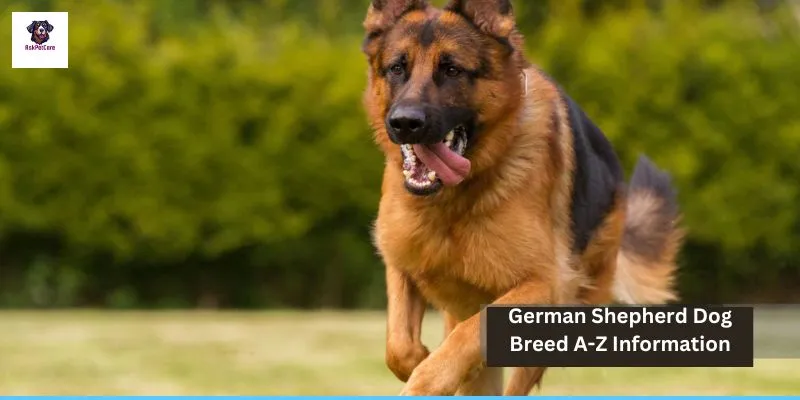
German Shepherd good family dog?
Is a German Shepherd a good family dog?
- Introduction: German Shepherds are popular and versatile breeds known for their intelligence, loyalty, and protective instincts. Many families find them to be excellent companions, but there are factors to consider.
- Temperament: German Shepherds can make excellent family dogs when properly trained and socialized. They are often affectionate and devoted to their families, forming strong bonds with both adults and children.
- Protective Instincts: German Shepherds have a natural protective instinct, which can make them excellent guardians for families. They are often wary of strangers and may act as deterrence against potential threats.
- Training and Socialization: Proper training and socialization are crucial for German Shepherds to be good family dogs. Early obedience training and exposure to various people, animals, and environments can help them develop into well-behaved and confident companions.
- Conclusion: While German Shepherds have the potential to be good family dogs, it’s important to consider their individual temperament, training needs, and energy level. With proper care and attention, they can thrive in family environments and become beloved members of the household.
Is German Shepherd a powerful dog?
- Introduction: German Shepherds are indeed powerful dogs, known for their strength, athleticism, and endurance. Their physical abilities make them well-suited for various working roles and activities.
- Physical Strength: German Shepherds have a strong and muscular build, with a deep chest, powerful legs, and sturdy frame. They are capable of performing physically demanding tasks, such as herding, protection work, and search and rescue.
- Working Roles: German Shepherds are commonly employed as police dogs, military working dogs, and service animals due to their power and versatility. They excel in tasks requiring strength, agility, and intelligence.
- Exercise Needs: Because of their power and energy, German Shepherds require regular exercise and mental stimulation to stay healthy and happy. Activities such as running, hiking, and agility training help them burn off excess energy and maintain their physical strength.
- Conclusion: German Shepherds are undeniably powerful dogs, both physically and mentally. Their strength and athleticism make them well-suited for various tasks and activities, but owners need to provide them with the appropriate exercise and training to channel their power in positive ways.
Are German Shepherds difficult?
- Introduction: German Shepherds are intelligent and independent dogs, which can sometimes be perceived as difficult to handle. However, with proper training, socialization, and care, they can be wonderful companions.
- Intelligence: German Shepherds are one of the most intelligent dog breeds, which can make them independent and strong-willed. They may challenge authority or test boundaries if not provided with clear leadership and consistent training.
- Training Needs: German Shepherds thrive on mental stimulation and require regular training to keep their minds engaged. They respond well to positive reinforcement techniques and enjoy learning new commands and tasks.
- Socialization: Early and ongoing socialization is essential for German Shepherds to prevent behavioral issues. Exposing them to different people, animals, and environments helps them become well-adjusted and confident dogs.
- Conclusion: While German Shepherds may require more effort and commitment than some other breeds, they are not inherently difficult dogs. With patience, consistency, and proper guidance, they can develop into well-behaved and loyal companions.
What are German Shepherd dogs known for?
- Introduction: German Shepherds are renowned for their numerous admirable qualities, which have made them one of the most popular and versatile dog breeds in the world.
- Intelligence: German Shepherds are highly intelligent dogs, known for their problem-solving abilities, quick learning, and adaptability. They excel in obedience training, agility, and various working roles.
- Loyalty: German Shepherds are incredibly loyal and devoted to their families. They form strong bonds with their owners and are often protective of them, making them excellent guard dogs and companions.
- Versatility: German Shepherds are versatile dogs that can excel in a wide range of roles and activities. They are commonly employed as police dogs, search and rescue dogs, service animals, therapy dogs, and family pets.
- Courage: German Shepherds are courageous and confident dogs that are not easily intimidated. They are often used in law enforcement and military roles for their bravery and willingness to protect and serve.
- Conclusion: German Shepherds are celebrated for their intelligence, loyalty, versatility, and courage. They have earned a reputation as one of the most dependable and capable breeds, making them valued companions and working partners in various fields.
Here are some reference books that are considered authoritative on the topic of dog care, including nail care:
- “The Complete Dog Owner’s Manual” by Dr. Bruce Fogle
- “The Ultimate Guide to Dog Care: Everything You Need to Know to Keep Your Dog Happy and Healthy” by Amy Marder and Andrew Luescher
- “The Veterinarians’ Guide to Natural Remedies for Dogs: Safe and Effective Alternative Treatments and Healing Techniques from the Nations Top by Martin ZuckerTop of Form
